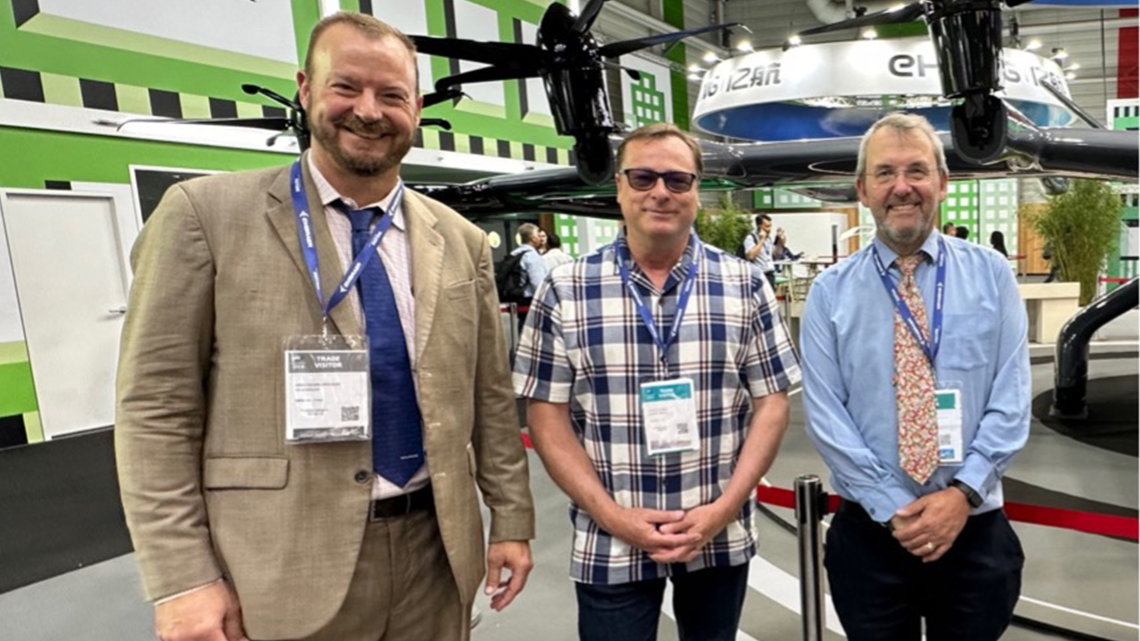
Chichester, UK, 14th September, 2023: In a world first, Viking Drone Packaging’s specially developed Crash Protected Container has been certified by the UK government in line with the Civil Aviation Authority’s (CAA) test programme. This development has the potential to significantly expand the art of the possible for the drone logistics sector, facilitating new kinds of delivery operations that were previously unattainable.
In the UK and Europe, it has been possible, in theory at least, to carry items classified as dangerous goods by drone for some time now. For most dangerous goods though, the regulations require the use of a certified Crash Protected Container (CPC) and no such container has existed.
Bridging the gap between what is possible in theory and what is achievable in reality has been a lengthy process. Aside from the not inconsiderable challenges of designing and building a lightweight container, capable of protecting its contents from the high impact forces following a drop from a typical drone operating altitude of 400 feet, the next challenge was the fact that there was no formal regulatory process by which such a container could be certified.
Clear standards set by the United Nations which define how dangerous goods should be packaged ready for transport by air have been around for a long time. However, these don’t address the concept of crash protection in the context of drone regulations. In 2021/22 the UK CAA led a project involving the Vehicle Certification Agency (VCA) and industry stakeholders (including Viking Drone Packaging) to develop a test procedure and process by which containers could be formally recognised as being crash protected. This was also a world first and a testament to the foresight of the UK CAA to recognise the need to fill an important regulatory gap in the rapidly evolving drone logistics sector.

Figure 1: Helicopter drop testing
That hurdle cleared, Viking then needed to pass the defined test regime, which was achieved using a series of helicopter drop tests followed by a detailed analysis of the results. Based on that work, along with additional sample testing conducted by the VCA, Viking have now been assigned the world’s first certification of a crash protected container for dangerous goods carried by drone.
What does this mean for the drone industry? Aside from the normal considerations for obtaining an operating approval from the national aviation authority, the key components required to gain approval to carry high risk dangerous goods by drone are: to establish appropriate handling procedures, to have staff properly trained, and to use an approved crash protected container and UN compliant packaging.
“We are delighted to have met the challenge of developing a lightweight, low-cost crash protected container for use by the drone industry and to open the door to a wide range of use cases that were previously impossible” said David Weilert, Co-founder of Viking Drone Packaging.
The kinds of logistics operations that will now be feasible include critical medical deliveries of items such as potentially infectious blood samples for urgent testing, or certain therapy drugs which fall into the dangerous goods classification like those used in chemotherapy treatments. Aside from dangerous goods, certain other therapy drugs, whilst not potentially dangerous, can be extremely expensive and could also benefit from the assurance that they could survive intact in case of a mishap whilst in transit.
“Our next focus is on providing a solution for transporting radiopharmaceutical therapies for use in cancer treatment and continuing to bring exciting new capabilities to the drone industry in innovative ways,” Mr. Weilert concluded.